I’ve been diving recently in North Sulawesi, on the island of Bangka. This particular small Indonesian island is exposed on its eastern side to the Indonesian Throughflow. This very strong current flows from the Pacific Ocean into the Indonesian archipelago and onward into the Indian Ocean. The warm, rich surface water is filled with plankton. So naturally, as a consequence of this nutrient-rich current, the island of Bangka is famous for its exceptionally diverse underwater life, and most particularly for the soft-coral-covered coral reef pinnacles.
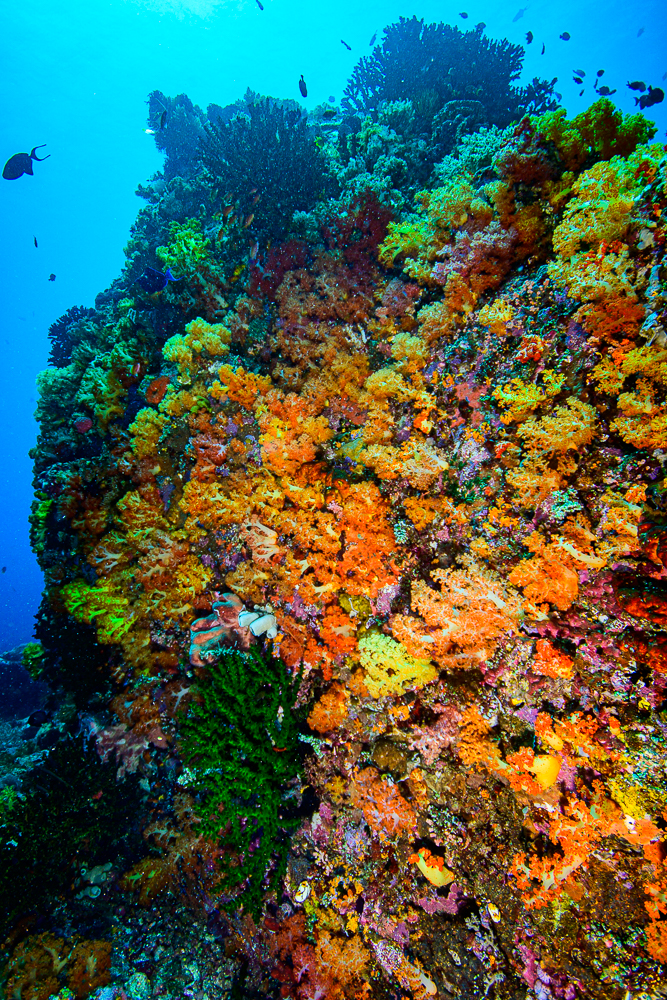
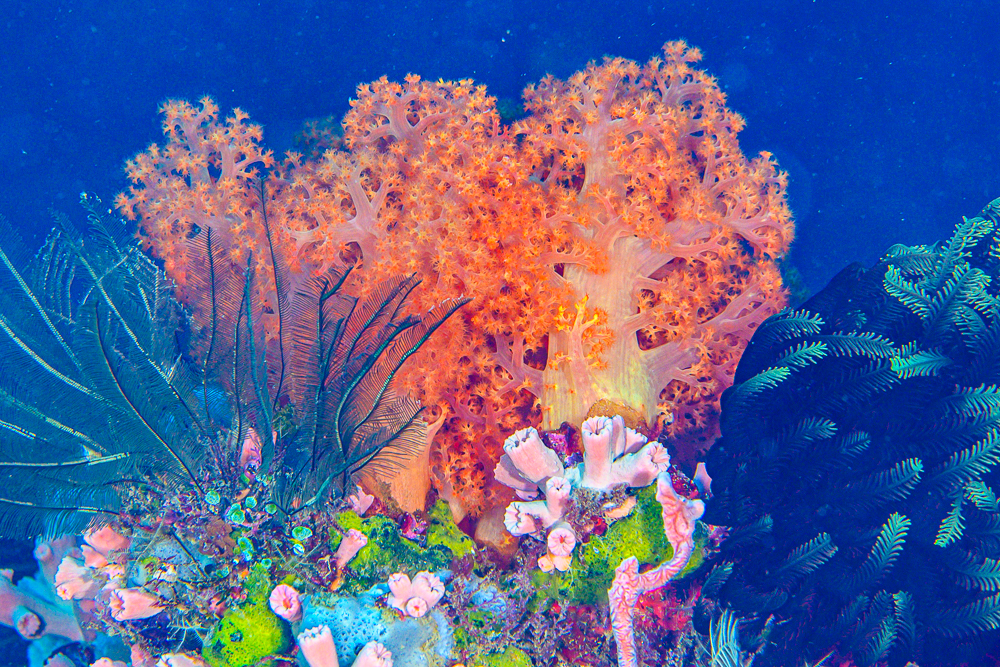
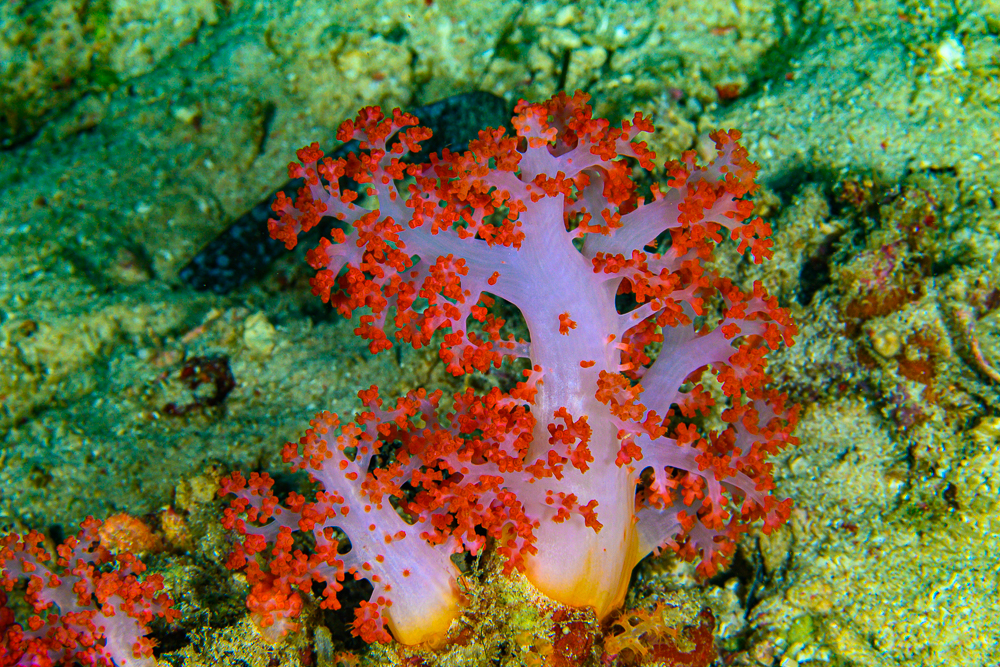
Divers come from all over the world to admire these amazingly colorful displays of soft corals.
Some soft corals also enjoy surge-rocking current
Having dived into these spots on numerous occasions, most of the time there is enough current to simply drift past these soft coral-filled rocks. A couple of spots that are on the end of a small, rocky cape are only diveable when the swell is small, resulting in favorable diving conditions.
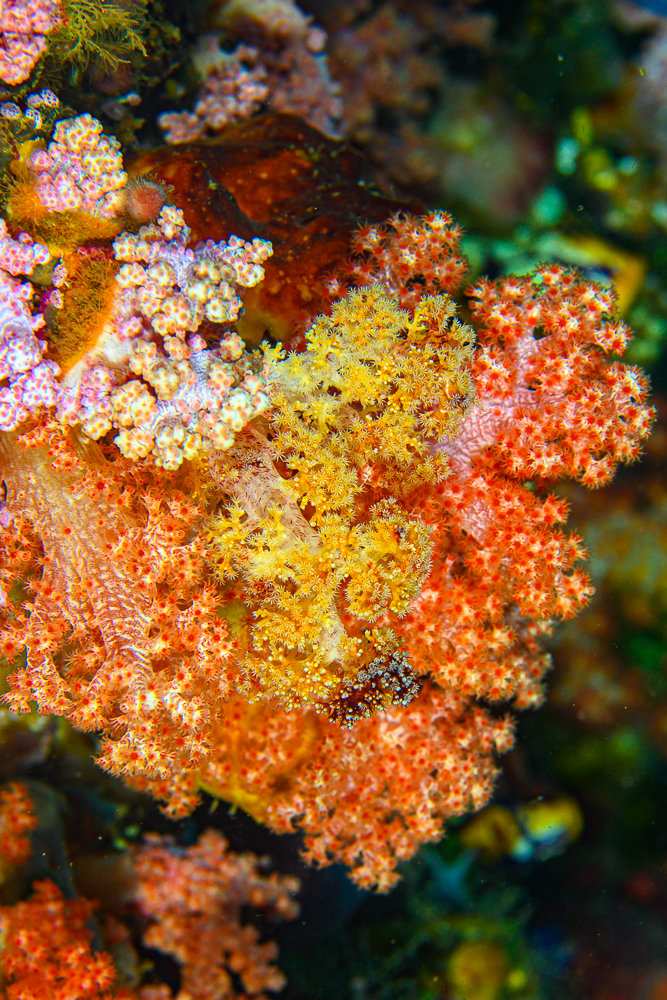
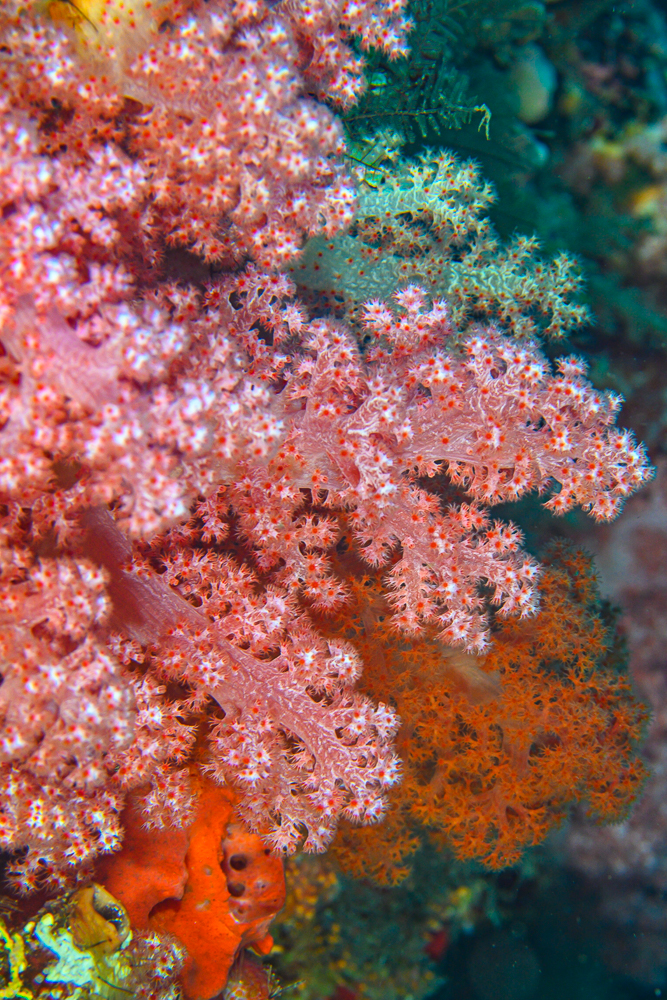
If you dive during times when there isn’t any current, that usually means most soft corals will be closed and not in the best condition to take pictures. I was actually surprised that on this particular slab, we could feel the small surge all the way to 30 m (90ft). There, all the corals were opened in feeding frenzy mode, enjoying the rocking currents that brought food through them.
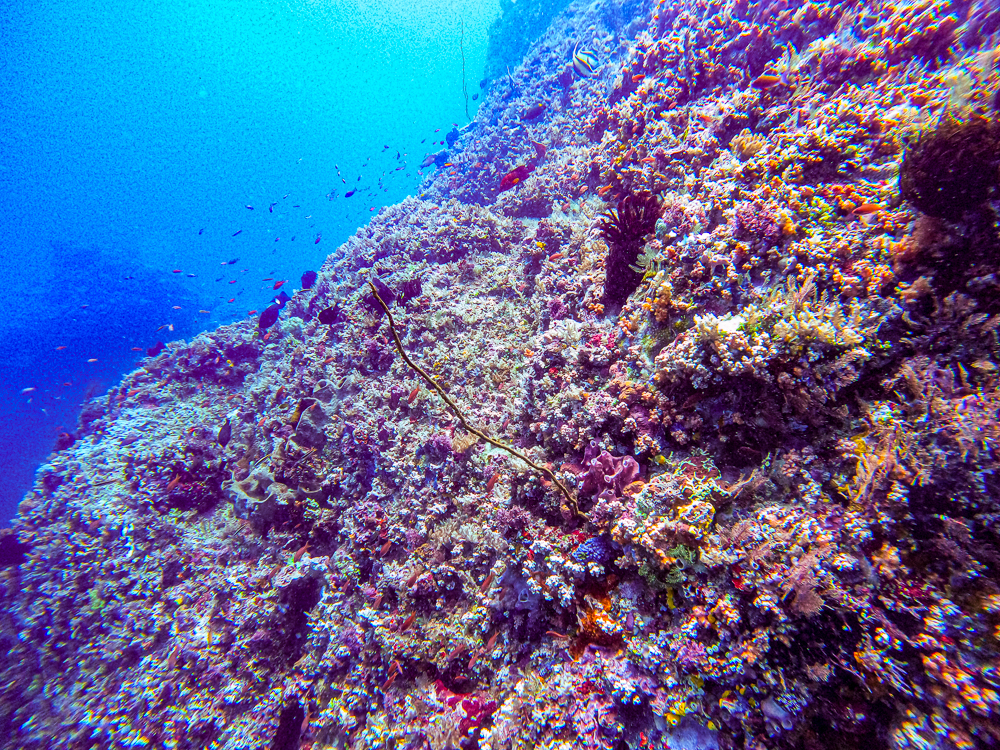
Slower currents going down along these walls are also responsible for the very dense soft coral cover, However, due to occasionally strong swells and pounding back-and-forth currents, these soft corals have to stay short. Expanding too far out into the water would mean being snatched right off the rocks and carried away in the flow.
Scleronephthya sp. are the most common soft coral in this area:
Scleronephthya is a very common soft coral in surge and current-prone areas. They are azooxanthellate and thus do not need light, and obtain all of their energy from feeding. This explains why we only find them in rich waters subject to intense flow.
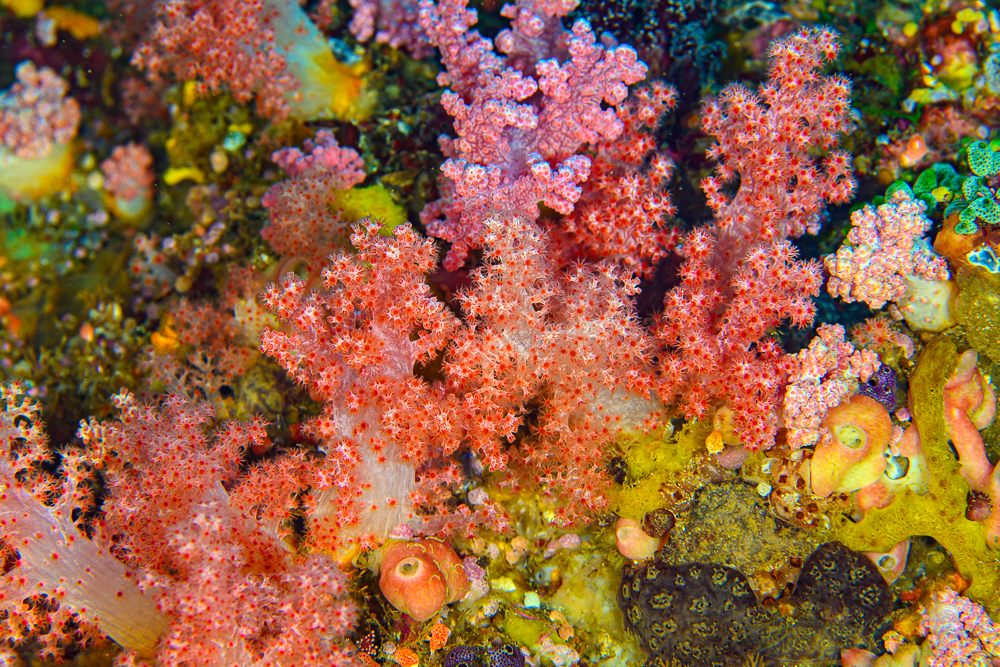
These corals have strong sclerites within their main stalk. This is especially evident in surge-prone specimens. Their polyps are weakly contractile and lack a supporting bundle. That makes them feel not too spiny to the touch.
Rocking soft corals in a phytoplankton soup could be the maintenance solution?
If the most famous colorful soft coral rocks are exposed to strong currents, I realized that some of them were thriving just exposed to the surge flow. They seemed to do very well just being rocked back and forward into the traditional surface soup of phytoplankton.
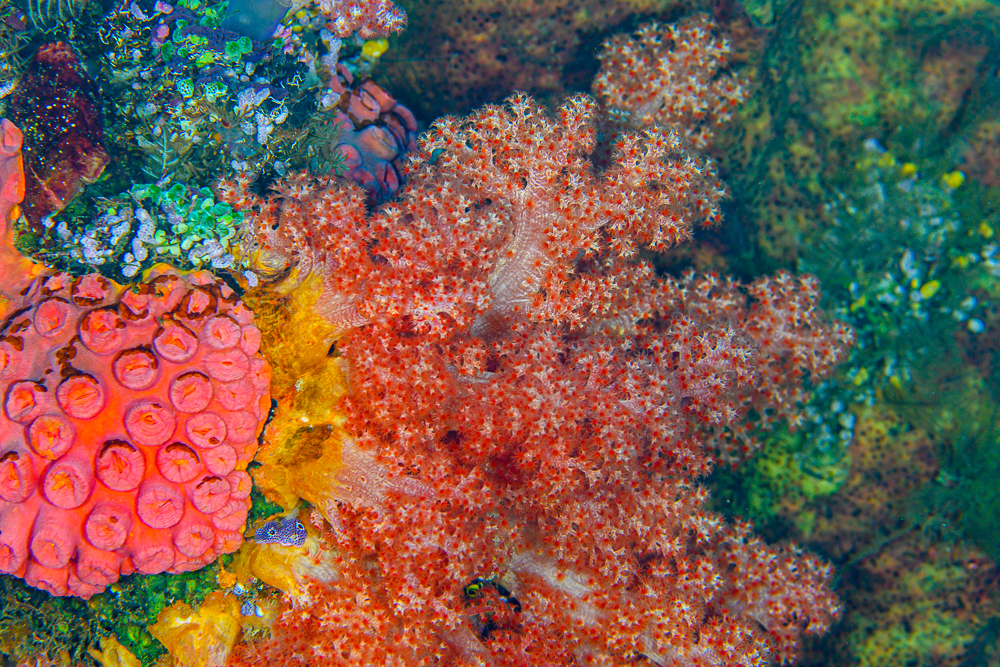
It also struck me that recreating these flow patterns could help maintain these corals in aquariums. Having the same phytoplankton-filled water, and rocking that water back and forward through the coral until the plankton is consumed, could be a solution to keeping these in aquariums.
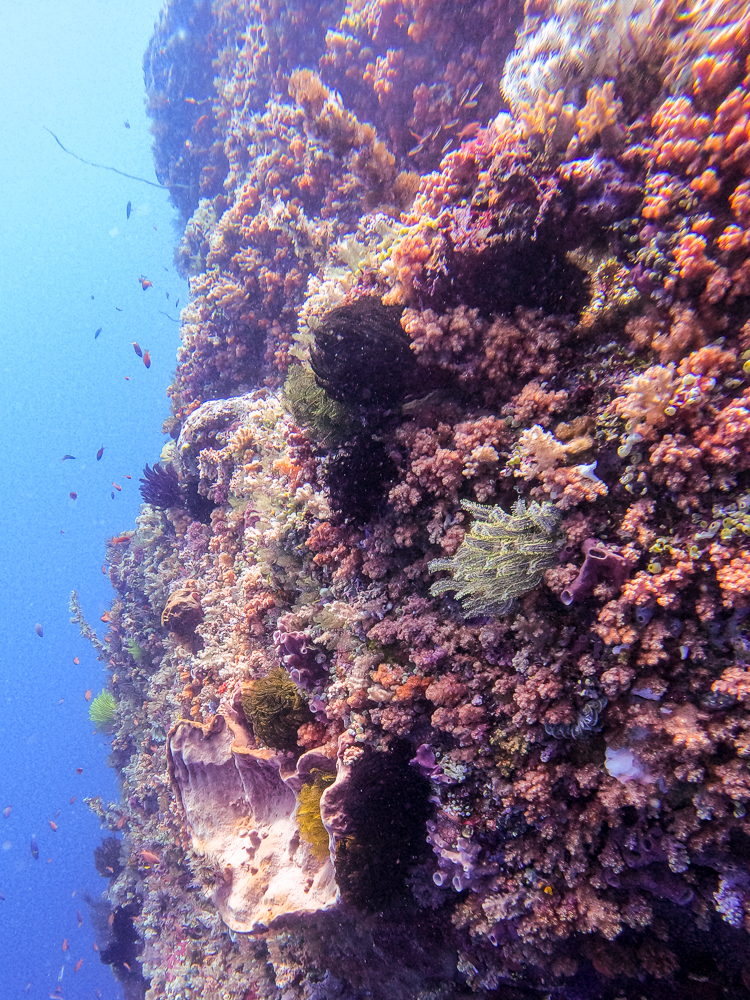
The azooxanthellate corals represent one of the last challenges in reef aquarium keeping. Finding solutions to maintain them and reproduce them is the future of this hobby. Perhaps taking their natural and preferred growth habitats could help unlock their secrets to long-term captive husbandry success.



